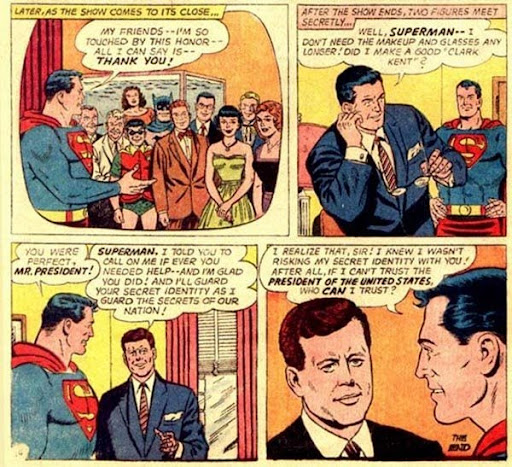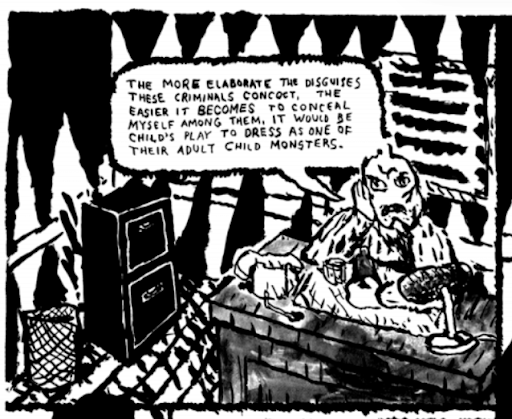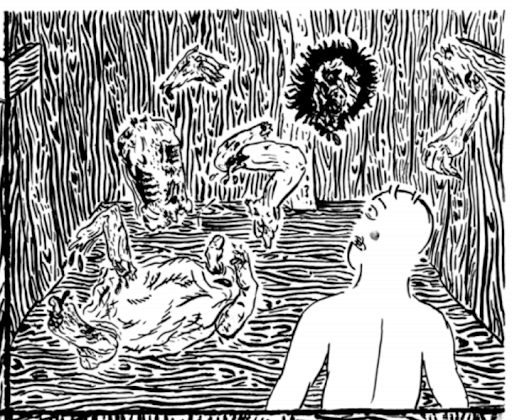"She wasn't interested in style or gestures of sophistication, but instead on the true implications embedded within peoples art. "
- Austin English
"She became interested in black metal through me and we discussed my favorite black metal project Ildjarn’s commitment to a process of reduction--to a ritual of obsessively removing adornment and creating a raw, pure, artifact. I do feel that her work carried this ethos. Her work was true."
- Priscilla Genet
"create a history and do your own work that interprets it. ignore anything that isn't relevant to you. don't ‘play a character’ or have an artistic brand or persona. don't pander to anything you feel distaste for. especially on the internet. if you're doing stuff that's specific to the internet you should avoid putting your name on it."
- @c.bren
"by disassociating yourself from stuff that you say by talking about ‘your character’ or by talking about various kinds of abstraction or how things change over time you're trying to devest yourself of taking any position, and you can do that if you want but i don't see what the point would be if this is a position you're adopting artistically. i don't think this transcendalist, detached, unmarked position that you're taking is an interesting one to make art from. and it's a pretty big privilege to be able to do that because if you're, like, a female artist trying to do that, to take one example, nobody is going to let you because they're going to insist on reading specific qualities into your work because of the marginalized position you occupy. it's annoying to have that done to your work but besides that i don't mind occupying a specific position. i would like to make work that is embodied. you can't escape the fact of occupying a specific position, although especially if it's to some extent a position of privilege you can use the kind of critical manoeuvring that i see on this blog to try to erase that and to claim this fictitious "unmarked" critical position. artists have done that for a long time already, i kind of would like to do something else especially since there's a certain opportunity available to us since we're working in a culturally marginalized art form. but i guess with this conversation about 'high art' you're expressing your interest in being part of the culturally dominant narrative. that narrative is really boring and irrelevant to me and anyway it's something i would be excluded from even if i wanted to be a part of it. i'm interested in establishing an alternative."
- @c.bren
"I'm trying to make being an angry feminist really cool"
- @c.bren
* * *
The Necrophilic Landscape, by Morgan Vogel, begins with a prologue, wherein, the protagonist, detective Lucas Barrette, kills a baby suspected of being a criminal. That sounds pretty gruesome, but Vogel makes it work comically through the juxtaposition of baroque language and primitive drawings. This establishes the general tone, a subtle tension throughout the book between horror and humor.
It is not a book interested in appeasing the arbiters of taste in comics. It functions as a kind of self-aware outsider art: raw, unmediated, sophisticated despite itself. The personality and crank sensibility of its creator ooze from every panel, and you are compelled to pay attention to it.
The title refers to “a concept employed by a feminist theorist [Morgan likes (Mary Daly)] of a male drive towards necrophilia,” though, in its initial incarnation, it was called “The Prickless Man”. The re-christening is in line with ideas of never being finished and repression of subcultures that permeate the book.
We learn that children and adults (all male) are in a constant war; adults control society and children have built their own “free child republic” outside the city. In order to masquerade as grownups to perpetrate crime, one child will, like in a Saturday morning cartoon, climb onto another's shoulders and wear a big coat to hide the deception.
I love the ability of comics to create a world where, since reality is presented as drawn imagery, the preposterous can happen. In the context of the world Morgan has built, it’s plausible for children to disguise themselves as adults or for adults to split in half and have each half carry on separately. As long as the world is consistent, the viewer will accept the possibility of these things and use their imagination to fill in the gaps where needed. There’s a long history of this in comics and cartoons.

Similar to Ed the Happy Clown or 1-800-MICE, it builds from this MacGuffin to constantly redefine where the story is going. The panels swell with words, compressing time into a gem-like tumescence, forcing immersion in the text, blocking the saccadic wandering eye from forming a gestalt of the page or mapping relationships between objects and backgrounds across the ragged borders. The figures are creepy ciphers, the backgrounds a mixture of patterning and ink wash. Though crude, the drawings are consistent in a way that contributes to the building of a world: barren, claustrophobic, menacing. They are the opposite of the sort of cartoon-as-grammatical-unit proggy school of comics that often feel flat and soulless. The thick, ratty marks and murky washes are expressive, occasionally taking on a Panter-esque fauvist quality.

More than serving to convey data pertaining to the narrative action, they evoke the inner world of the drawer or simply exist as lines on the surface of the page. The text is crystalline perfection, an engine driving the story along flawlessly. The juxtaposition of these blunt, leaden images with the precise, graphomaniacal prose is remarkable.
Over the course of the book, power relationships, such as those between adults and children, societal classes, even within different parts of the self, are sharply in focus. There is a feeling of the disempowered inverting the dynamic and doing anything necessary to take power back. There is a fluidity within this struggle; it's never absolutely clear who is on top and who is on the bottom. Repression breeds complexity and adaptation, which can upset the order.
"I’m interested in what it means for there to be a cultural or political 'mainstream' against which can be defined various subcultures or genres or fringe political movements."
The "mainstream" here begins as the world of the adults with various groups of kids functioning as subcultures, but that eventually flips as Barrette, inside the child fortress, becomes the minority fighting the oppressive children (as well as part of himself) to survive.
"In other words, there is a doubling, dividing and interchanging of the self."
Similarly, identity shifts around. Characters divide and combine. There is a spirituality to the lack of completeness, remaining stunted, being in flux. Throughout the book, there’s a friction between this spirituality and its presentation, body horror as ironic slapstick.
The back of the book augments the strip and brings attention to its author, the person, by adding context in the form of a compendium of quotes from Morgan titled "i like good, and am not the devil", along with several photographs and an afterword by Raighne, the publisher. Morgan is quoted that the narrative of Die Elixiere des Teufels by E. T. A. Hoffmann “is too obscure and intricate a story for us to venture upon a summary of it." This is analogous to the impression of reading the strip that precedes this text, and one wonders if Morgan was intentionally attempting to fabricate a similarly mysterious, unpackable tale.
"In my personal work I try to avoid nostalgia or escape into fantasy and I see a tendency towards nostalgia in the use of these generic references to male authors."
Within The Necrophilic Landscape, there seem to be warring aspects of its creator, one nostalgic and appreciative of genre work, the other skeptical of nostalgia and working to undermine genre. Like her shifting characters, Morgan appears to assume various identities or poses, at once divided, then recombined.
"By sending off social signals that I am part of and accepted in some form of fringe culture or another, I can maybe elide or make myself seem separate from aspects of my subjectivation that make me feel uncomfortable."
When I read Morgan's obituary in TCJ a couple years ago, it affected me a lot. I, unfortunately, never met her in real life nor interacted with her in any way other than as one of her many online personas. It brought me back to 10-15 years ago when I thought about comics all the time and the concerns of "the medium". At that time, there was a thriving culture of blogging and message-boarding within comics where subcultures were born, theories were hashed out, and characters tried on new identities. The consumers of these blogs were a small and insular group. Most were also creators (or, at least, hoped to be). Inspired by Comics Comics, where Frank Santoro opined on the mystic harmonies of panel geometry, Blaise Larmee and I started cometscomets (originally called comixcomix but changed at the behest of Frank) in the middle of 2009, in part, to question commonly held beliefs about formal propriety. The posts were often somewhat trollish and experimental, but, really, they probably weren't the point. What was exciting about having a blog then was interacting with other like-minded folks in the comments. @c.bren was a presence there and elsewhere. She went by many other names, including Morgan Vogel.
Learning more about her, she feels like more of a puzzle to me than she did at the time, a sort of infinite onion. As part of writing this review, I scoured the internet for her work (it's hard to find much). What I did find brings back my impressions of her from a decade ago, an Andy Kaufman-like fabrication, blurring the lines between herself and the characters she was operating as. She wrote a fair amount of theoretical screeds, but it's hard to tell how much was simply aesthetic play or to what degree Morgan identified with the ideas being explored, to what degree "Morgan Vogel" was the ultimate project and most interesting mystery.
In the afterword, Raighne explains how the comic was fittingly produced by chopping up and recombining images from a comic Morgan had published on the web, cutting out passages at Morgan's direction. This book, itself, is the second version published by 2dcloud, a seeming end to the process of becoming.












